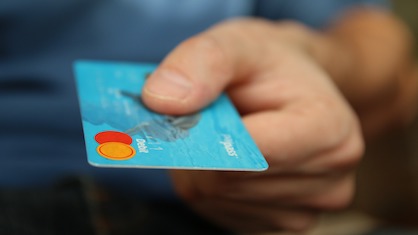
Talk about hammering the plastic. In November 2016 Australia’s 16.7 million credit card accounts were used to make 226 million transactions with a total value of $27.8 billion. We are currently paying interest on $32.2 billion worth of credit card debt, running up an annual interest bill of over $5.6 billion (that’s $5,600,000,000!).
It’s not just the easy money that cards provide; it’s the easy form of delivery via “tap and go” that’s pushing our debt to extraordinary levels. The quicker the transaction, the less thought or planning required. Pay now and think about it (and deal with it) later.
Don’t become a statistic – here are some things to look out for plus a few tips.
Traps
-
Over 40% of credit card spending goes on groceries and utilities. While this isn’t a problem if you pay off your card balance in full each month, if you’re paying interest just so you can buy the necessities of life, it’s a real danger sign that you may be living beyond your means.
-
Most credit limits are well beyond cardholder needs. On average, Australians only use about a third of their available credit limits each month. However, by giving you a higher credit limit card issuers hope temptation will get the better of you. If that means you can’t pay off your entire balance each month you’ll end up paying them lots of interest.
Also bear in mind that if you apply for a personal loan or mortgage in the future, lenders will look at your combined card limits, not just the balances. High credit limits will affect the size of loan approved. Reduce the temptation and reduce your limits to appropriate amounts.
- Beware the bonus card. Yet another credit card may come with a new mortgage. Look out for annual fees or other costs and make sure you understand what’s involved. If you don’t need it, cancel it.
Tips
-
Financial institutions can only offer to increase your credit limit if you specifically ‘opt in’. This can be done in writing or over the phone. However, it’s prudent to withhold this permission to keep your limit under control. You can always apply for a once-off increase if you really need to.
-
Switch to a reloadable (pre-paid) credit card. Like a debit card it means you are using your own money with the added advantages that you can pre-set a limit on your spending and reduce the risks associated with buying online. Reloadable cards are available from banks, other financial institutions and major retailers.
-
If you sign up for a new card for a 12-month interest-free purchase, pay it off in the first year then cancel the card before the renewal fee is automatically charged. There is no point paying an annual fee if you’re not going to use the card.
And a myth
Many people think that it is only lower income earners who are susceptible to the siren call of easy credit. But like the Sirens of Greek folklore themselves, it’s a myth. In fact, higher income earners also rack up huge balances on gold, platinum and diamond cards, and can experience real difficulty in paying them off.
If your credit cards are more an enemy than a friend, contact us on 1300 874 474 to discuss a range of solutions to get you back on track.
Sources:
ASIC’s MoneySmart website www.moneysmart.gov.au credit card debt clock
